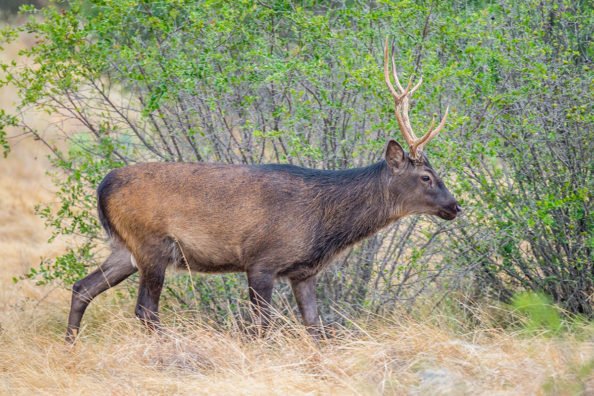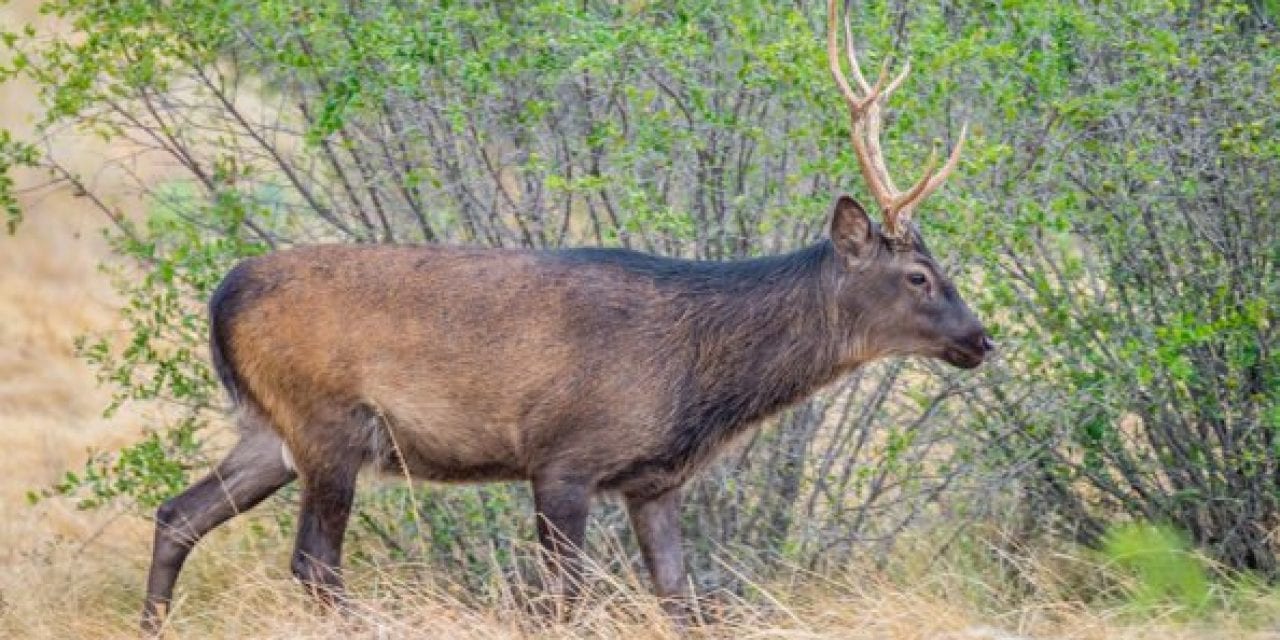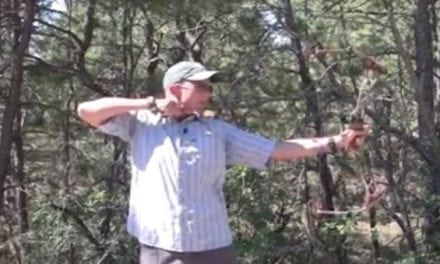
Here’s what hunters and other outdoorsmen need to know about the Sika deer.
What exactly is a Sika deer, and more importantly, how can you hunt this unique ungulate?
Most veteran sportsmen and women already have some understanding of this interesting game animal, but there’s still a lot of unknown surrounding the Sika deer, or Cervus nippon.
We’re hoping to change that, and help outdoorsmen and women learn more about what makes the Sika deer so special.
Sika Deer Specifics
Originating from the far east, particularly Japan, the Sika deer is also known as the spotted deer, the Japanese deer, or the Japanese Sika deer. They are technically native to the Eastern part of Asia and Japan, but have also been introduced to other regions of the world, including parts of North America, Europe, Australia, New Zealand, and even the Philippines.
In fact, according to Animalia, “Armenia, Austria, Azerbaijan, Czech Republic, Denmark, Finland, France, Germany, Ireland, Lithuania, Madagascar, New Zealand, Philippines, Poland, Ukraine, United Kingdom, and the United States,” have at one time or another been introduced with Sika deer.
For those of us dwelling in North America, there are now suitable hunting populations of Sika deer in Virginia, Maryland, and Texas. In fact, there are no seasonal restrictions on Sika deer in Texas at this time, meaning you can hunt them year-round.
Sika are mainly a forest-dwelling deer and prefer the wooded, leafy areas that have a dense understory. However, they can adapt well to a range of other habitats like the freshwater marshes of the Maryland and Virginia shores.
Though you may have never seen one, the Sika deer is a distinctive, quirky animal that provides those lucky enough to encounter them a one-of-a-kind experience.
Identifying the Sika Deer
Sika Deer
Posted by Los Robles exotic ranch on Wednesday, October 23, 2019
The Sika, unlike their cousins the red deer, typically does not lose its spots upon reaching maturity. For all intents and purposes they may look like an overgrown fawn to those of us used to seeing North America’s most widespread deer species, the whitetail. Some do lose their spots, and it’s different amongst locations and the various subspecies.
Sika deer may be quite small- to medium-sized, depending on the region where they live and the food sources they have available. They have a smaller head and shorter legs compared to other more common deer. A male Sika deer’s antlers generally have three to four points or tines, though the more mature and dominant stags have more.
The does (sometimes called hinds) generally have two black bumps on their head, but no discernible antlers. Sika deer are a lighter, yellow brown to reddish-brown, and they also have a dark stripe down the center of their backs which is surrounded in the summer by white spots. They usually sport a white rump.
During winter, their color is dark brown or dark gray to a grayish black with no spots or very faint ones. Females and young Sika deer can have a color with a more distinct red or orange tint.
Mating Season
Sika doe with fawn; Topsey Wildlife Ranch, Copperas Cove, Texas
Posted by Bernie Thurston on Tuesday, August 4, 2020
Breeding season for Sika deer is in the fall, usually in September and October, as it does with many other cervids. The females begin to come into heat and stags compete to mate with multiple females during the autumn, gathering as many as a dozen females to his territory each year.
Like with whitetails, rutting adult males on the chase will lose up to 30 percent of their fat stores, but also make themselves more susceptible to stalking and hunting. Don’t worry, we’ll cover more of that soon enough.
The gestation period for a successfully bred Sika is about 30 weeks, when normally a single fawn is born around May or June.
Sika Deer Behavior
Sika deer are primarily crepuscular in that they are most active at dawn and again at dusk. They are nocturnal as well, but like many animals can be seen during the daylight hours feeding.
The males can be solitary most of the year, but are territorial and mark their “turf” by digging holes with their feet and antlers.
Sika stags keep harems of does during the rut, which they vigorously defend with their antlers and hooves. Stags urinate into their scrapes, similar to what whitetail bucks do to mark their territory, leaving a strong musk scent to warn off rivals.
An active group of Sika deer is known as a herd, mob, or gang.
One of the most unique things about the Sika is their vocalizations, as they can make 10 distinct noises ranging from soft whistles to strange bleats to high-pitched, almost frightening screams.
Sika Deer Hunting
Like we said, there are indeed Sika deer hunting opportunities in the southern Texas and coastal areas near the eastern shores of the United States, but they are not very abundant.
The Maryland DNR says that,
“Maryland biologists and deer managers first worried that the “miniature elk” would expand into the upland territory of native white-tailed deer. This resulted in higher bag limits being set so that hunters would be encouraged to harvest and control the Sika deer population.”
The 2020 season for Sika deer in Maryland starts with archery on September 11 through October 21, early muzzleloader runs from October 22 to October 24, and the general firearms season starts on November 28 and runs through December 12.
All of the Maryland regulations for the Sika deer can be seen here.
Archery hunting for Sika deer in Virginia starts in early October and goes to November 13 on Chincoteague Island. The firearm season starts on November 14 and runs through January 2, 2021.
(All dates as of early fall 2020. Check links and seasonal dates to be certain.)
Maybe your best opportunity to hunt this animal would come from the Lone Star State where several outfitters are available to provide guided hunts on private land.
It’s worth it to do your homework, and find someone with experience to guide you or supply you with advice before pursuing Sika. Their vocal nature can be an effective advantage, but it takes time to learn how to execute Sika calls the right way.
You won’t need a super-speedy bow or large caliber gun to harvest a Sika deer, and their antlers and hide can make for extra special mementos from a successful hunting experience.
Sika Deer as Wild Game Meat
Eating Sika deer is not much different than eating whitetail or elk; it can be prepared in the same ways. Try marinating and grilling, frying, using the meat for stews, and making the ground meat into anything from burgers to taco meat to meatloaf, and you’ll see the versatility of Sika deer meat right away.
Sika deer are herbivores and like to graze on understory, eating anything from marsh grasses to leafy vegetation. They are even known to eat poison ivy, but crops such as soybeans and other staples are on the menu as well.
The Sika Deer of the Genus Cervus
These native animals from East Asia have found a home here in the U.S. and around the world, even to the point where they are not considered an invasive species due to the fact that they do not compete with whitetail deer for territory or food supply.
They can be hunted, sometimes without restriction, and eaten as well as any venison we ever had, so what are you waiting for? It’s Sika deer season somewhere!
Looking for a little more or even hot lunch for your hunting blind? Follow my webpage, or on Facebook and Twitter.
NEXT: RABBIT HUNTING 101: GEAR, STRATEGY, AND FINDING SPOTS
WATCH
The post The Sika Deer: Everything There is to Know About This Exotic Species appeared first on Wide Open Spaces.

















